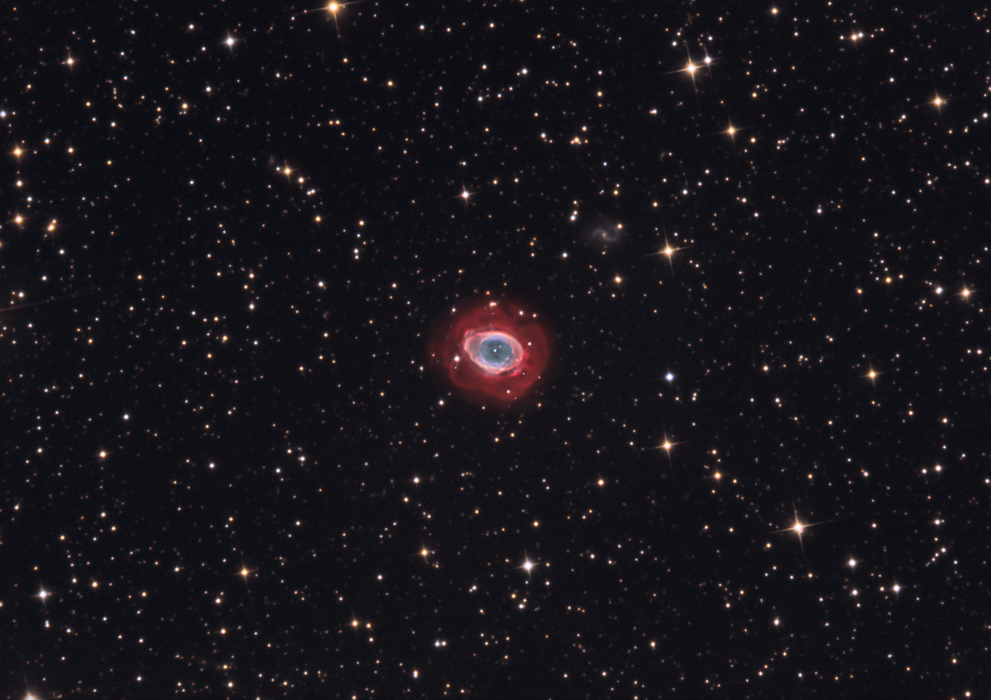M57 (The Ring Nebula)
Characteristics:
Magnitude: Approximately 8.8
FOV: Approximately 20' x 30'
Distance: 2,300 light years
RA (J2000): 18h 53m 35s
Dec (J2000): 33 degrees 01' 36"
Position Angle (Pinpoint): plus 12 degrees
Description:
Messier 57 is a planetary nebula,
which represents the end stage of stars
about the
same size as our Sun (in contrast, stars much larger than our Sun
typically undergo a supernova explosion). Such stars experience
a phase of continued helium burning on their surface, long after the
fuel in their core has been exhausted. The outer layer is shed
into space, igniting surrounding elements such as hydrogen through
excitation by the solar wind and heat. The
term "planetary" nebula is a misnomer and was coined by Herschel, based
upon its superficial visual resemblance to his recently discovered
planet, Uranus. This is an LRGB composite in which Ha signal was
added to the red channel in order to reveal the faint outer
shell. I did not have much time to acquire more luminance signal,
but the signal to noise was quite good despite only 90 minutes of
unblocked luminance (since the object is fairly bright). A
nice description of M57 may be found on Rob Gendler's
site.
Photographic
Details:
Date: May 26, 2008 (Ha); May 29, 2008 (LRGB)
Scope: Vixen VC200L at f9 (FL = 1800 mm) on the
Takahashi NJP
Mount.
Autoguider: SBIG ST-402 with
Sky90 at f4.5.
Camera: Apogee U32 -20C.
Filters: Astronomik
Clear (unblocked), Ha (6nm), R, G, B filters.
Exposures: Luminance: 18 x 5' =
90' (unbinned); Ha: 3 x 30' =
90' (unbinned); R: 3 x 10' = 30' (binned 2x2); G: 3 x 10' = 30' (binned
2x2); B: 3 x 15' = 45' (binned 2x2). Total exposure 4.8 hours.
Conditions: I could only salvage
90 minutes of Ha exposure on 5/26/08 due to clouds. May 29 was a near perfect night with seeing
in the range of 2.8" (good for my site).
Post-processing:
Calibrated, aligned, and Sigma Clip combined
in Maxim. DDP
in ImagesPlus (IP). Deconvolution in AIP4WIN.
Further processing in Photoshop
CS (16
bit format).
Please
note: Graphics on this website may not be reproduced without
author permission.
Back to Nebulae
Home

